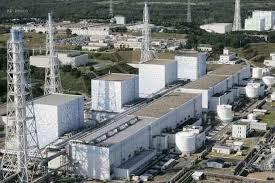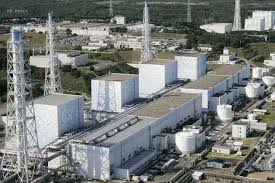
Japan’s power producers are set to pay for China’s coal policies after the nation’s steelmakers faced the same fate sometime back.
According to UBS Group AG and Morgan Stanley, after China’s efforts in 2016 to trim overcapacity led to a more than doubling of spot prices, Bottom of Form
Japanese utilities may pay at least 29 percent more for annual supplies this year. According to a spokesman from Tohoku Electric Power Co., which typically negotiates the deal on behalf of the nation’s electricity providers, contract talks have begun with coal miners Glencore Plc and Rio Tinto Group.
As China, the world’s biggest producer, cut output and boosted imports, the price of coal used to make steel and fuel power stations surged in 2016. While global thermal miners saw their shares surge, Japanese steelmakers were forced to pay more than double for quarterly contracts.
According to a Morgan Stanley report, which cited Platts, an offer in the mid-$80s was reportedly made to Tohoku for thermal supplies, which was rejected, by Glencore, which has typically taken the lead in talks. There wee no cmments on the price issue from Tohoku.
“The market appears to have tightened over the past six months and the Japanese generally pay a premium over the prevailing spot price for security of supply,” said Matthew Boyle, a Sydney-based industry consultant at CRU Group. “Chinese domestic policy will continue to have quite a strong influence on the seaborne market for both thermal and metallurgical coal.”
Morgan Stanley analyst Tom Price wrote in the report earlier this month that starting in Aoril, Japan’s power producers may pay between $80 to $85 for annual supplies. The highest price for coal since 2014 was noted in a prediction by UBS which held a possible contract price of $81.
Other buyers and sellers will follow a price benchmark that would be set up by the agreed April-March contract prices. More than 10 percent of the seaborne thermal coal trade is covered by the accord, estimates Morgan Stanley. There were no comments made on the contract talks by Glencore and Rio Tinto spokesmen.
According to Globalcoal, on Monday there was a rise, from $3.15 to $81 a ton, in thermal coal from Australia’s Newcastle port which is considered to be a regional benchmark. After surging to $110.40 in November, the highest level in more than four years, prices have averaged more than $80 the past two months
According to the National Development and Reform Commission, China’s top planner, as long as prices stay in a range considered acceptable to regulators, the country China has no plans to reintroduce output restrictions this year. the nation’s biggest miner, Shenhua Group Corp., said in November that it’s between 550 to 650 yuan a ton ($79 to $94) even though While the NDRC didn’t define the range.
“Negotiations will be interesting this year because spot prices are appreciably higher than what they have been for a while and a lot of that is a result of China’s coal policy,” said Daniel Morgan, an analyst with UBS in Sydney. “Contracts may be settled toward the back end of March.”
(Source:www.bloomberg.com)
According to UBS Group AG and Morgan Stanley, after China’s efforts in 2016 to trim overcapacity led to a more than doubling of spot prices, Bottom of Form
Japanese utilities may pay at least 29 percent more for annual supplies this year. According to a spokesman from Tohoku Electric Power Co., which typically negotiates the deal on behalf of the nation’s electricity providers, contract talks have begun with coal miners Glencore Plc and Rio Tinto Group.
As China, the world’s biggest producer, cut output and boosted imports, the price of coal used to make steel and fuel power stations surged in 2016. While global thermal miners saw their shares surge, Japanese steelmakers were forced to pay more than double for quarterly contracts.
According to a Morgan Stanley report, which cited Platts, an offer in the mid-$80s was reportedly made to Tohoku for thermal supplies, which was rejected, by Glencore, which has typically taken the lead in talks. There wee no cmments on the price issue from Tohoku.
“The market appears to have tightened over the past six months and the Japanese generally pay a premium over the prevailing spot price for security of supply,” said Matthew Boyle, a Sydney-based industry consultant at CRU Group. “Chinese domestic policy will continue to have quite a strong influence on the seaborne market for both thermal and metallurgical coal.”
Morgan Stanley analyst Tom Price wrote in the report earlier this month that starting in Aoril, Japan’s power producers may pay between $80 to $85 for annual supplies. The highest price for coal since 2014 was noted in a prediction by UBS which held a possible contract price of $81.
Other buyers and sellers will follow a price benchmark that would be set up by the agreed April-March contract prices. More than 10 percent of the seaborne thermal coal trade is covered by the accord, estimates Morgan Stanley. There were no comments made on the contract talks by Glencore and Rio Tinto spokesmen.
According to Globalcoal, on Monday there was a rise, from $3.15 to $81 a ton, in thermal coal from Australia’s Newcastle port which is considered to be a regional benchmark. After surging to $110.40 in November, the highest level in more than four years, prices have averaged more than $80 the past two months
According to the National Development and Reform Commission, China’s top planner, as long as prices stay in a range considered acceptable to regulators, the country China has no plans to reintroduce output restrictions this year. the nation’s biggest miner, Shenhua Group Corp., said in November that it’s between 550 to 650 yuan a ton ($79 to $94) even though While the NDRC didn’t define the range.
“Negotiations will be interesting this year because spot prices are appreciably higher than what they have been for a while and a lot of that is a result of China’s coal policy,” said Daniel Morgan, an analyst with UBS in Sydney. “Contracts may be settled toward the back end of March.”
(Source:www.bloomberg.com)





